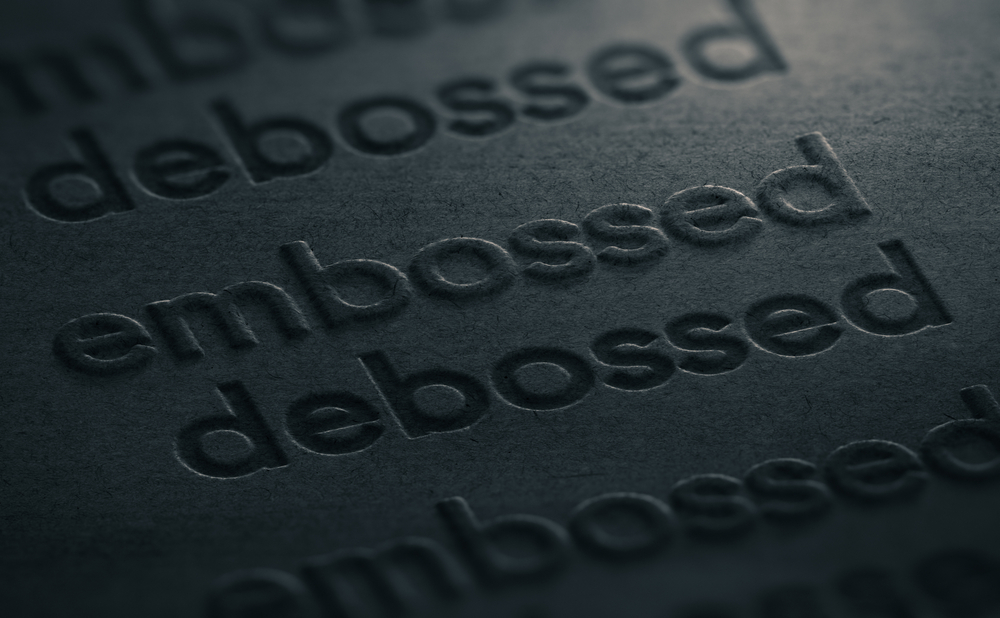
Embossing and Debossing explained
Ready to move beyond standard paper finishes and add texture to your print materials? That’s where embossing and debossing come in. These finishing techniques can transform ordinary materials into tactile masterpieces.
But before we dive into the details, let’s break down the basics:
What’s embossing?
Embossing is the process of creating a raised image, design, or text on a material, giving it a 3D effect. It’s popular for paper products because it supports finer design details. Other popular materials for embossing include glass, metal, fabric, and plastic.
What’s debossing?
Debossing is an imprint method that makes the design look sunken or recessed into the material. This method is commonly seen on designer bags because it leaves a luxurious and classy finish. Popular materials for debossing include paper, leather, wood, fabric, and metal.
The showdown: embossing vs debossing
Visual impact: Embossing is your go-to for a bold, attention-grabbing look. If you want your design to lead off the material and demand attention, embossing is your champ. Debossing is more subtle, adding a refined, elegant touch without shouting for attention.
Durability: Both techniques are durable, but embossing can sometimes lead to more wear and tear on the raised surface. Debossing generally doesn’t affect the surface as much, which might be a consideration if you’re working with delicate materials.
Cost: Both embossing and debossing can increase the cost of production, but embossing often requires more setup, which may incur extra charges. If you’re on a budget, debossing might be the more economical choice.
When to use each method
So, when should you go for embossing, and when should you opt for debossing? Here’s a handy guide:
Go for embossing when you want to make a statement, add a touch of glamour, or create a high-impact visual. It is perfect for high-end invitations, luxury packaging, and marketing materials where you want to leave a lasting impression.
Go for debossing when you prefer a more refined, understated look. It’s ideal for elegant business cards, subtle branding, and designs that require a soft touch of class.
Design tips for embossing and debossing
- Keep it simple: Intricate designs can be challenging to emboss or deboss. Simpler designs often work better and look more elegant.
- Consider the material: Heavier materials are more suitable for embossing and debossing. Lightweight or fragile materials may not handle the pressure well.
- Test and proof: Always request a proof before finalising your design. Better to catch any issues before the final production!
- Balance texture and text: If you combine embossing or debossing with text, make sure the text remains legible and complements the texture.
Embossing and debossing are fantastic ways to add depth and dimension to your print and promotional materials. Whether you’re aiming for a bold, attention-grabbing effect with embossing or a subtle, sophisticated touch with debossing, both techniques offer unique benefits that can elevate your designs. Remember, it’s not just about what you say with your print materials but also how you make them feel.
Ready to take on bossing? Do you need further advice?
Reach out to our team today or pop into our office; we’ve got the tea and biscuits ready! We will help you bring your ideas to life!